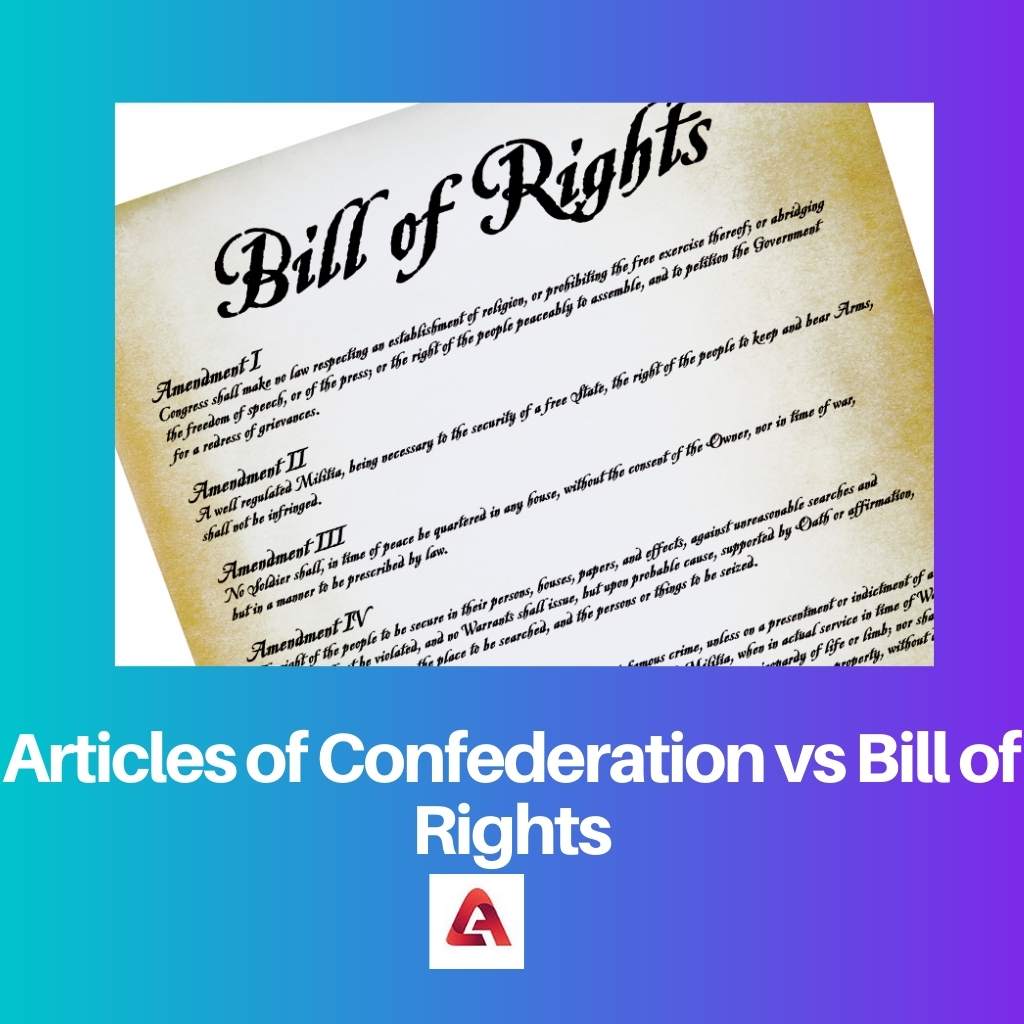A country consists of various states, and each state is made up of a huge number of cities. Maintaining such a large population can be very tough.
For this purpose, the country’s government makes particular rules and regulations that should be followed by its citizens and the state governments as well.
The Article of Confederation and the Bill of Rights of the United States of America is part of such rules formation. They were formed so that the country could be managed properly.
The first-ever constitution that served the United States of America was formed and was named the Articles of Confederation and perpetual union.
It was the agreement between 13 original American states and was approved in November 1777. It was formed to preserve all American states’ independence and sovereignty, so they had to follow this constitution’s rules and regulations.
The first 10 amendments to the US Constitution are named the Bill of Rights. In 1787 the United States of America started facing various challenges, so it required an efficient federal government, and so the decision to form a constitution was taken.
But later, the individuals of the country started to have fears and doubts regarding their rights. As a result, the Bill of Rights then brought 10 amendments, giving the people some sense of security of their liberties and rights.
Key Takeaways
- The Articles of Confederation established the first national government in the United States, while the Bill of Rights established individual rights and protections against government overreach.
- The Articles of Confederation did not include a Bill of Rights, while the Bill of Rights was added to the Constitution to address concerns about individual liberties.
- The Articles of Confederation did not provide for a national judiciary, while the Bill of Rights established the right to a fair trial and due process.
Articles of Confederation vs Bill of Rights
The Articles of Confederation were the first written constitution of the United States, in force from 1781 to 1789, which created a weak national government and granted most powers to individual states. The Bill of Rights refers to the first ten amendments to the United States Constitution, which protect individual liberties and limit the power of the government. These amendments were ratified in 1791.

Comparison Table
| Parameters of Comparison | Articles of Confederation | Bill of Rights |
|---|---|---|
| Definition | The agreement that formed the first constitution of the United States of America. | The first 10 amendments made to the US Constitution are named as Bill of rights. |
| Reason | Formed to preserve the state’s independence and sovereignty. | Formed to give the people some sense of security of their liberties from the federal government. |
| Origin | Approved in November 1777 | In 1787. |
| Function | Told the government what it should do. | Told the government what it should not do. |
| After effects | The people of America initially resisted it. | The people of America were happy and satisfied with the Bill of Rights. |
What is Articles of Confederation?
The first-ever constitution that served the united states of America was formed by an agreement between 13 original American states. This agreement was named the Articles of Confederation and perpetual union.
The second continental congress approved the constitution in November 1777, whereas March 1 marked the date when this constitution came into force.
The idea behind this was to preserve all American states’ independence and sovereignty. All the states of America had to look at this article before taking any big actions such as conducting business, addressing an issue to the state, foreign affairs, etc.
However, it took a long time for the people of the United States of America to accept the Articles of Confederation.
In drafting this constitution’s document, 13 people were appointed to a committee. The chairman of this committee was John Dickson, who later on presented all the related results. Later on, in early 1779, the article of Confederation was ratified by Virginia, and so the people of the country started believing and following the rules.

What is Bill of Rights?
The first 10 amendments to the US Constitution are named the Bill of Rights. In 1787, most of the American leaders observed that the young nation was facing various challenges, demanding a more efficient and powerful federal government.
Under the article of Confederation, the government did not have absolute power. For example, it had no power over tax-raising, interstate commerce, or the proper examination of conflicts.
As a result, The United States Constitution came into being, creating a federal government with 3 separate branches, i.e. Executive, Legislative and Judicial branches.
These branches had absolute powers, which created chaos and fear among the individuals regarding their rights. The Bill of Rights then brought 10 amendments, giving the people some sense of security in their liberties from the federal government.
These 10 amendments included rights such as freedom of speech and religion, freedom from arrest without a warrant, right to a trial by a jury, assurance of the rights that people may have but not listed in the constitution, etc.

Main Differences Between Articles of Confederation and Bill of Rights
- The agreement that formed the first constitution of the United States of America is called the Articles of Confederation, whereas the first 10 amendments made to the US Constitution are named the Bill of Rights.
- Article of Confederation was formed to preserve the state’s independence and sovereignty. In contrast, the Bill of Rights was formed to give the people some sense of security in their liberties from the federal government.
- Article of Confederation was formed and approved in November 1777, whereas as Bill of Rights was approved in 1787.
- The article told the government what it should do. In comparison, the bill told what it should not do.
- The people of America initially resisted the Articles of Confederation, whereas they were happy and satisfied with the Bill of Rights.

- https://www.jstor.org/stable/796690
- https://heinonline.org/hol-cgi-bin/get_pdf.cgi?handle=hein.journals/stflr2§ion=11

The comparison table provides a clear understanding of the differences between the Articles of Confederation and the Bill of Rights.
The Articles of Confederation were crucial in preserving the independence and sovereignty of the individual states.
The Bill of Rights was a necessary addition to address the fears and doubts regarding individual rights at the time of the Constitution’s formation.
The Articles of Confederation reflected the need to preserve the states’ independence, while the Bill of Rights highlighted the importance of individual liberties.
I agree with the importance of the Bill of Rights in protecting individual liberties and limiting the power of the government.
The formation of the US Constitution was a significant step in addressing the challenges the nation was facing under the Articles of Confederation.
The formation of the Bill of Rights was a response to the limitations of the federal government under the Articles of Confederation.
The distinction between the intent of the Articles of Confederation and Bill of Rights is evident in the after-effects each had on the people of America.
The Articles of Confederation were vital in establishing the first national government in the United States, but it did not address individual rights. The Bill of Rights was necessary to establish protections against government overreach.
The significance of the Articles of Confederation and the Bill of Rights in shaping the governance and liberties of the United States cannot be understated.